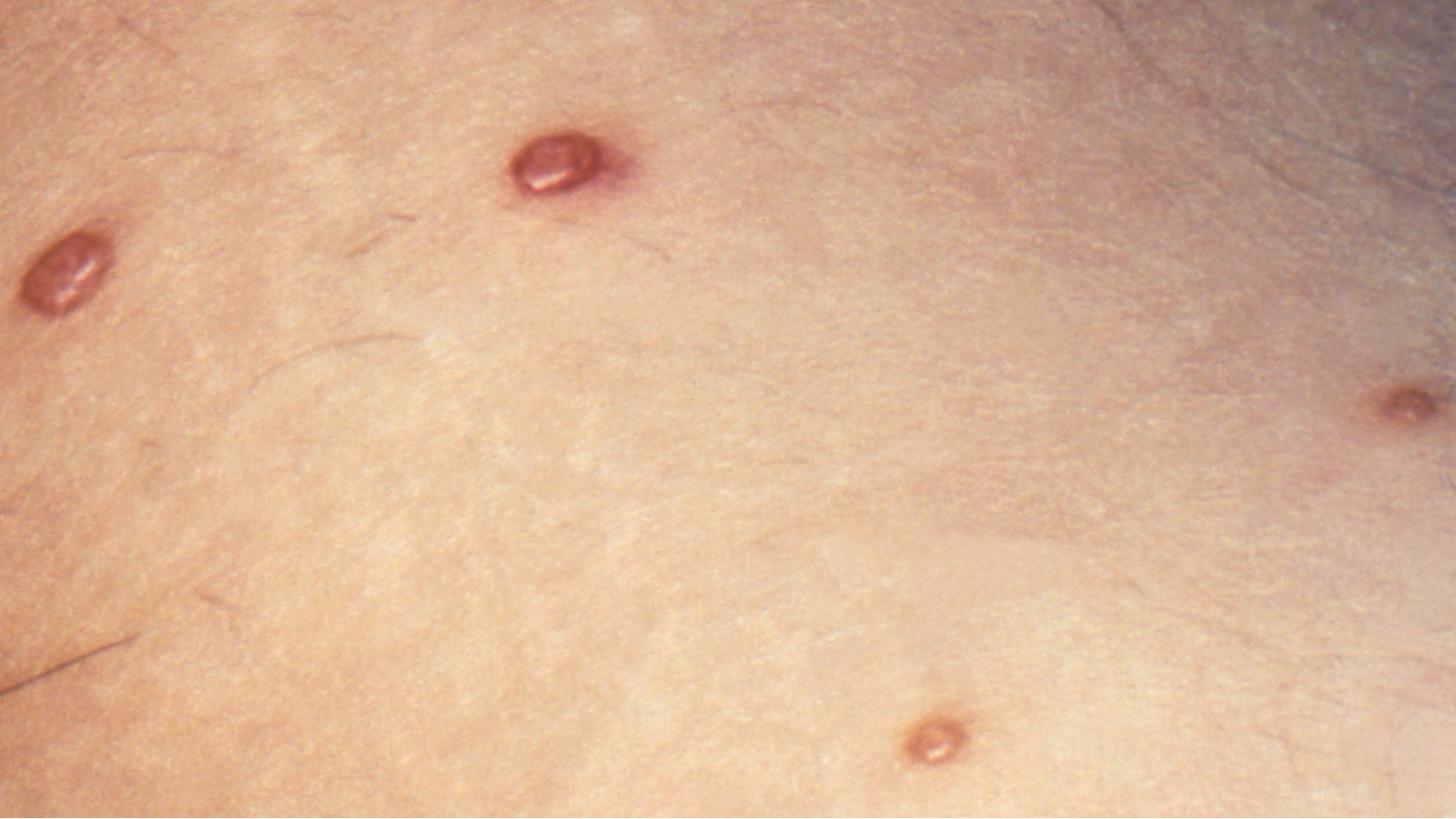EP41: Molluscum Madness, Beetlejuice + Bonus Best Of!
What Is Molluscum Contagiosum?
A Common (and Contagious) Skin Infection in Kids and Adults
Source: CDC
If you’ve noticed small, mysterious bumps popping up on your child’s skin—or even on yourself—you might be dealing with molluscum contagiosum. Don’t panic. It’s common, usually harmless, and (yes) a little gross.
This post is based on our Oh Gross! podcast episode, “Molluscum Madness: Bumps, Beetlejuice & the Summer Fun Virus + Bonus Best Of!” — where we break down what it looks like, how it spreads, and what you can do about it. 🎧 Listen here.
Molluscum contagiosum is a viral skin infection caused by a poxvirus. It creates small, raised bumps that often have a dimple in the center. They can show up one at a time or in clusters, and while they’re not dangerous, they are highly contagious.
This skin condition is:
Very common in children (ages 1–10)
Highly contagious through direct and indirect contact
Usually painless, though sometimes itchy
Slow to resolve on its own (6 months to 2 years without treatment)
What Do Molluscum Bumps Look Like?
Spotting it early helps prevent spread. Molluscum bumps are:
Small (pinhead to pencil eraser size)
Flesh‑colored or pink, sometimes shiny
Round with a tiny dent/dimple in the middle
Often on the face, arms, legs, trunk, or groin
Painless, but can itch
👉 In adults, bumps may appear on the genitals, inner thighs, or lower abdomen due to sexual transmission.
How Do You Get Molluscum?
The nickname “summer fun virus” comes from how easily it spreads during pool season, camp, and sports. Transmission happens through:
Skin‑to‑skin contact (wrestling, roughhousing, intimacy)
Shared items like towels, razors, toys, or sports gear
Pools & hot tubs (or shared wet towels around them)
Scratching bumps and spreading them across your own skin
Sexual contact in adults
Who’s Most at Risk?
Kids under 10
People with eczema or compromised immune systems
Athletes in skin‑to‑skin sports (wrestling, gymnastics)
Anyone sharing towels, razors, or swim gear
Possible Complications
While mostly mild, molluscum can lead to:
Redness/inflammation
Secondary bacterial infections from scratching
Scarring
Conjunctivitis if bumps are near the eyes
How to Prevent Molluscum
Do:
✅ Wash hands often
✅ Cover bumps with clothing or bandages
✅ Clean shared toys, towels, and gear
✅ Let skin air out at home for healing
Don’t:
🚫 Scratch or pop bumps
🚫 Share towels, razors, or swim gear
🚫 Shave over infected areas
🚫 Have sex with visible bumps
Treatment Options
If bumps are spreading, bothersome, or in sensitive areas, dermatologists have safe treatments:
Cantharidin (“Beetle Juice”) – Painless topical that blisters bumps off. Great for kids; usually clears in 1–2 weeks with possible follow‑up.
Cryosurgery – Freezing bumps with liquid nitrogen. Quick, but uncomfortable for young kids.
Curettage – Scraping bumps off. Minimal bleeding; better for older kids and adults.
Pulsed Dye Laser (PDL) – Useful for widespread outbreaks or those with weak immune systems.
💡 Do not DIY. Cutting, squeezing, or trying internet “cures” often makes things worse. Always see a doctor for proper diagnosis and care.
When to See a Doctor
Call your pediatrician or dermatologist if:
Bumps are near the eyes or genitals
They’re spreading rapidly or not going away
You’re unsure if it’s molluscum or another rash (like impetigo)
You or your child have a weakened immune system
Final Thoughts
Molluscum contagiosum may be “the summer fun virus,” but there’s nothing fun about watching bumps spread. The good news? It’s gross, not dangerous—and with patience, prevention, and sometimes a little help from your dermatologist, it clears up.
Looking for More?
Sources:
CDC – Molluscum Contagiosum
Mayo Clinic – Molluscum Overview
American Academy of Dermatology – Molluscum Treatment

